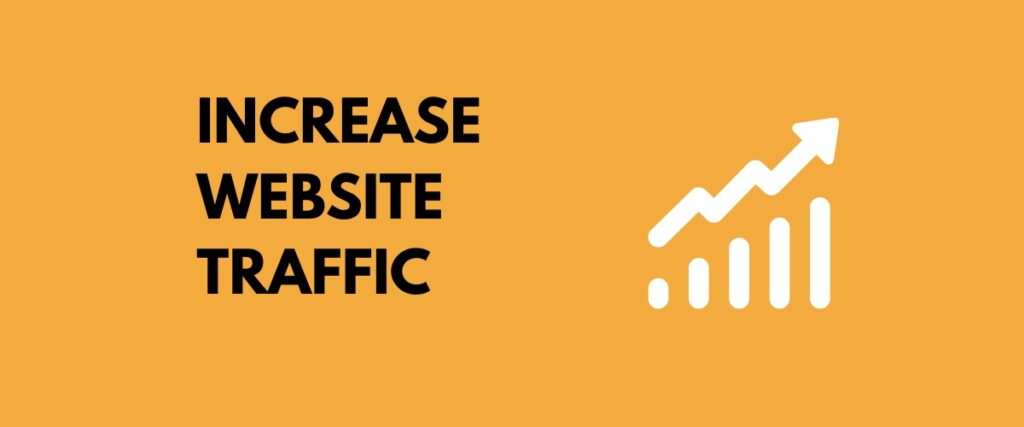In the vast cosmos of the internet, where billions of websites struggle for a moment of stardom, rising from obscurity can seem like an insurmountable challenge. As a website owner, one persistent question plagues your mind: “Does my site need a traffic generator, specifically a website traffic generator?” The allure of these generators is undeniable, promising rapid influxes of online visitors with just the click of a button. They can offer you immediate visibility and a swift increase in numbers, creating an illusion of success. However, is this the right path for sustainable growth or merely a fleeting mirage? Let us dive deeper into understanding the relevance and long-term impact of using a website traffic generator compared to employing tried-and-true organic strategies to increase your website’s traffic. As we explore, we’ll uncover the potential benefits and risks associated with traffic generators and contrast these with the solid foundation built by organic growth tactics.
The Temptation of Traffic Generators
Traffic generators promise floods of visitors at a click of a button. They can be categorized into two primary types:
- Bot-Based Traffic Generators: These employ automated scripts to simulate visitors.
- Natural Visitor Traffic Generators: These use incentive-based schemes, diverting clicks via ads or captchas.
While traffic generators can offer immediate results, their pitfalls are equally evident. Bots, for instance, don’t engage with content, impacting site quality metrics negatively, which can deteriorate your SEO rankings. Real visitor traffic might look appealing, but the value of a disengaged visitor wanes quickly.
The Pitfalls of Artificial Traffic
Reliance on artificial traffic can be a double-edged sword:
- Reduced Engagement: Low dwell times and high bounce rates signify unengaged visitors.
- SEO Penalties: Search engines may penalize sites employing deceitful tactics to inflate traffic.
- Skewed Analytics: Artificial traffic distorts data, hampering marketing strategy evaluations.
Hence, investing in sustainable, long-term strategies is more beneficial than shortcuts. Here’s how you can organically boost your website traffic.
1. Stellar Content Creation
Content remains the cornerstone of attracting sizable, organic traffic. Here’s what you need to do:
- Understand Your Audience: Tailor content to match audience interests and pain points.
- Create High-Quality Content: Ensure your content is well-researched, informative, and engaging.
- Repurpose Content: Maximize reach by transforming a blog post into a video, infographic, or podcast.
A consistent stream of valuable content enhances your site’s appeal, retaining visitors and encouraging shares.
2. Optimize for Search Engines (SEO)
SEO is paramount in boosting organic traffic. Key areas of focus include:
- Keyword Research: Utilize tools like Google Keyword Planner to identify relevant terms.
- On-Page SEO: Optimize titles, meta descriptions, and headers.
- Image Optimization: Compress images for quick load times and utilize alt tags.
- Link Building: Cultivate backlinks from reputable sites to enhance domain authority.
Regularly audit your site, making necessary tweaks to stay aligned with evolving SEO algorithms.
3. Leverage Social Media Platforms
Harness the immersive power of social media:
- Engage with Users: Foster community by interacting with comments and messages.
- Post Consistently: Regular posting keeps your audience engaged and informed.
- Collaborate with Influencers: Tap into larger audiences through influencer partnerships.
Promoting content on platforms like Instagram, Facebook, Twitter, and LinkedIn can drive steady traffic back to your website.
4. Email Marketing
Email marketing is far from obsolete. Build a robust mailing list and:
- Send Newsletters: Regular updates can keep your audience engaged.
- Personalize Content: Tailor emails based on user behavior and preferences.
- Incorporate Call-to-Actions: Guide subscribers to your website through compelling call-to-action.
Emails provide a direct channel for traffic, enhancing repeat visitor rates.
5. Guest Blogging and Collabs
Writing guest posts for popular blogs in your niche establishes authority and brings traffic back to your site. Similarly, collaborating on projects or events exposes your site to broader audiences.
6. Webinars and Live Sessions
Host webinars or live sessions on relevant topics. Promote these sessions across your channels, inviting audience participation. These activities boost traffic and elevate your authority in the domain.
7. Use Analytics to Guide Strategy
Google Analytics, SEMrush, and other tools help you to understand visitor behavior. Refine strategies based on these insights to improve traffic metrics continually:
- Monitor Traffic Sources: Identify where your visitors are coming from.
- Assess Content Performance: Understand which pieces drive the most engagement.
- Track Engagement Metrics: High bounce rates might signal the need for improvement.
Regular analysis ensures your strategies stay effective and aligned with your goals.
Conclusion: Beyond Shortcuts
While traffic generators https://www.sparktraffic.com/website-traffic-generator might provide an appealing quick fix, they’re not a sustainable solution. Authentic engagement and organic growth foster a robust foundation for your website. Prioritize creating valuable content, optimizing for SEO, leveraging social media, and utilizing analytics to fuel your website’s journey to thriving online. Remember, the path to increased traffic isn’t paved with shortcuts but with consistent, quality effort that resonates with your audience. Embrace this strategy, and watch your online presence flourish sustainably.











